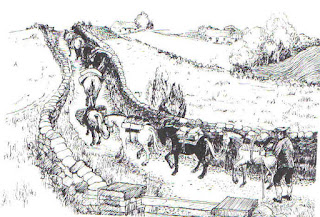The Rev. Dr David Malcom LL.D , academic, minister , teacher and forgotten poet of Madderty and Crieff ( 1763 – 1833 )

I have always admired College Buildings at the top end of East High Street partly because of its distinctive architecture but also on account if its unusual history . A story written by author and artist Constance Frederika Gordon Cumming many years ago relates that the building was built by a Dr Malcolm to “ educate medical students ” . Its later usage as a boarding school known as St Margaret’s College confuses matters even further ! Even in the present age of post codes and general anonymity Crieffites still refer to it as “ College Buildings ”. Who then was Dr Malcolm and to which “ college “ do we refer ? My investigation into Dr Malcolm begin in the confused mode ! I had received a copy of Perthshire in Bygone Days from a respected long established inhabitant of the town . I have become attuned to being the repository for a fascinating assortment of historical nick nacks and this one indeed proved quite fascinating . Published in 1879 ( Whittingham , London )




